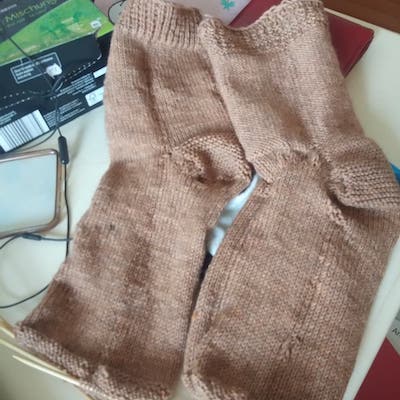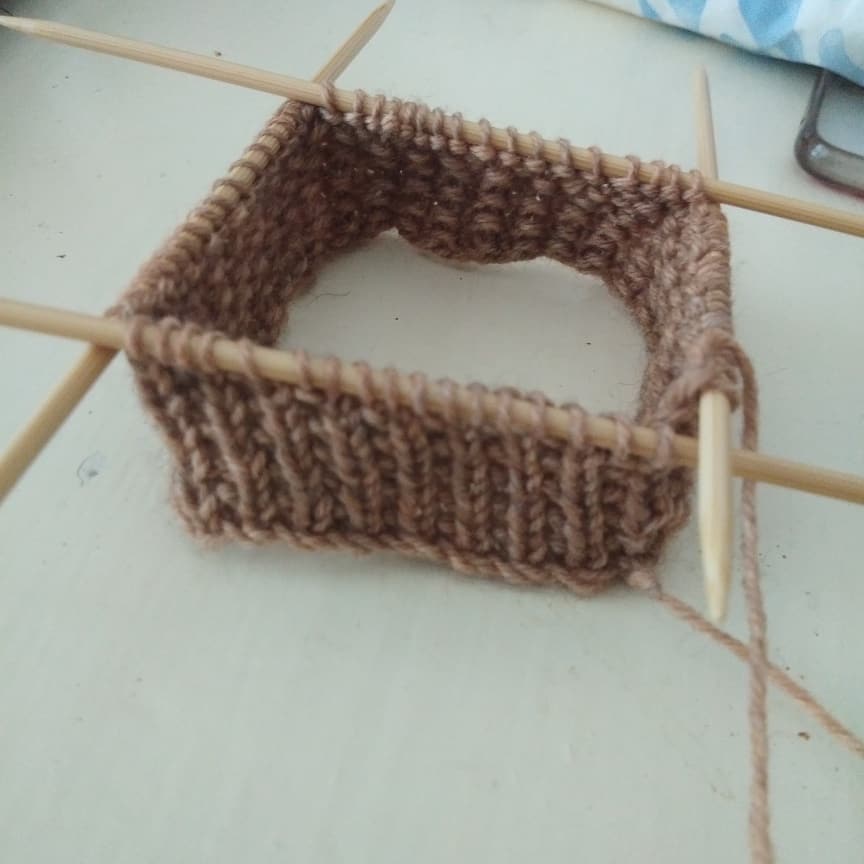Q&A with Bo Wang, Senior UX Researcher, Best Buy
Editor’s note: Nancy Cox is the founder of Research Story Consulting and former CPG corporate researcher. Her work and play include words, sketchpads, cooking (not baking) and the occasional sock puppet.
Passions, hobbies, healthy distractions and even guilty pleasures – discover how the research community plays and how that plays out in their work life. In the Venn diagram of work and play, what happens when work and play overlap? Research colleagues share their work and play stories in this interview series by Nancy Cox.
Hello to Bo Wang, senior UX researcher, Best Buy.
What is the “play” in your life?
 Making things, especially knitting and crocheting. With my knitting I am a forever beginner – intermediate level but love doing it. I enjoy making something from almost nothing – just a thread – and putting something out into the world. An example, I once had scraps of yarn that friends and family had given me. I got the idea I wanted to make something grand – a large blanket. By using these scraps, I created colorful sections that became an impressive blanket. I made this large blanket because at the time I was job hunting and expecting something grand would come my way. As I wrapped up my project, a job offer was extended to me – perfect timing! The blanket also comes in handy now because it gets cold in my office in Wisconsin.I see knitting as social. I give away much of what I make – scarves and beanies to my husband, my mother-in-law, my friends. I know people are wearing them. Often these small gifts become a conversation starter that brings people close. In chatting about the knits, we learn about each other because we humans have the nature of crafting and sharing. Funny that I like the social aspect so much that I don’t have much of my own work that I can show you in this interview.
Making things, especially knitting and crocheting. With my knitting I am a forever beginner – intermediate level but love doing it. I enjoy making something from almost nothing – just a thread – and putting something out into the world. An example, I once had scraps of yarn that friends and family had given me. I got the idea I wanted to make something grand – a large blanket. By using these scraps, I created colorful sections that became an impressive blanket. I made this large blanket because at the time I was job hunting and expecting something grand would come my way. As I wrapped up my project, a job offer was extended to me – perfect timing! The blanket also comes in handy now because it gets cold in my office in Wisconsin.I see knitting as social. I give away much of what I make – scarves and beanies to my husband, my mother-in-law, my friends. I know people are wearing them. Often these small gifts become a conversation starter that brings people close. In chatting about the knits, we learn about each other because we humans have the nature of crafting and sharing. Funny that I like the social aspect so much that I don’t have much of my own work that I can show you in this interview.
How has your play influenced your research work?
Knitting skills help me with my research work, like planning ahead, learning by trial, risking new patterns, having a sense of progress over time, stitching together threads and tying together loose-ends … literally! When I get stuck at my research work, I pick up the needles and yarn because my brain gets to work on a different track from where I am stuck. Pulling threads into patterns, I manage to organize my thoughts into coherent ideas.
Also, patience. It takes time. I have a plan, like I want to knit a scarf – this won’t take just one afternoon. Same thing at work. I get research requests that feel like they should be done yesterday. I can show the requester a plan, the time it takes against other priorities. It helps the stakeholder understand. Respect the time.
Patience also gets me through the difficult part – in knitting the difficult part is in the first couple of rows. It doesn’t look like it goes to take any shape or pattern. It looks ugly. But be patient and persistent and believe that the pattern will emerge. Same at work. You make a plan – the research scope, a pact with stakeholders. Then it gets messy, designing the research and asking myself, “Can I ask these questions directly or not? How difficult will the recruit be?” But getting past the first part and having the overall plan, the project emerges. You can see the pattern, the overall shape of the results. Just like in knitting, you learn to keep a holistic view while working with each strand.
What would you tell readers who want to know more about your area of play?
 Start with scarves as your first project. They are very forgiving with width and length; errors are not that visible. Or maybe even a coaster. I would never recommend anyone start with socks – they look simple but there are lot of intricate changes. As a beginner you need a plan, you need to know the right yarn. My first socks, I picked a very bulky yarn thinking that would be cozy. Wrong move. I ended up having a gigantic sock that could be used as a hat! And it’s too warm!
Start with scarves as your first project. They are very forgiving with width and length; errors are not that visible. Or maybe even a coaster. I would never recommend anyone start with socks – they look simple but there are lot of intricate changes. As a beginner you need a plan, you need to know the right yarn. My first socks, I picked a very bulky yarn thinking that would be cozy. Wrong move. I ended up having a gigantic sock that could be used as a hat! And it’s too warm!
Learners should be open to asking experienced people. I first learned to knit in the fourth grade, but the teacher just drew it on the board. I asked two girls who knew how to knit to show me. They knew because their mothers had shown them. I learned to knit from knitters not the drawing.
When I made my successful pair of socks, I started with going to the yarn store in Switzerland where I was living. Two women who were shopping saw me picking up yarns and started asking me question – was I buying for someone or myself? What was I making? Who was I making this for – if I was going to make for my grandmother, what colors does she like to wear? These women were good researchers now that I think about it. They let me make choices, but their questions helped me. Then the storekeeper gave me a free pattern and asked about my needles – based on my experience, she showed me I would need five tiny needles. I had the right yarn, I had a pattern, I had the right needles. Now, I’ve knitted socks that I wear and they look terrific. Be open to helpers!
